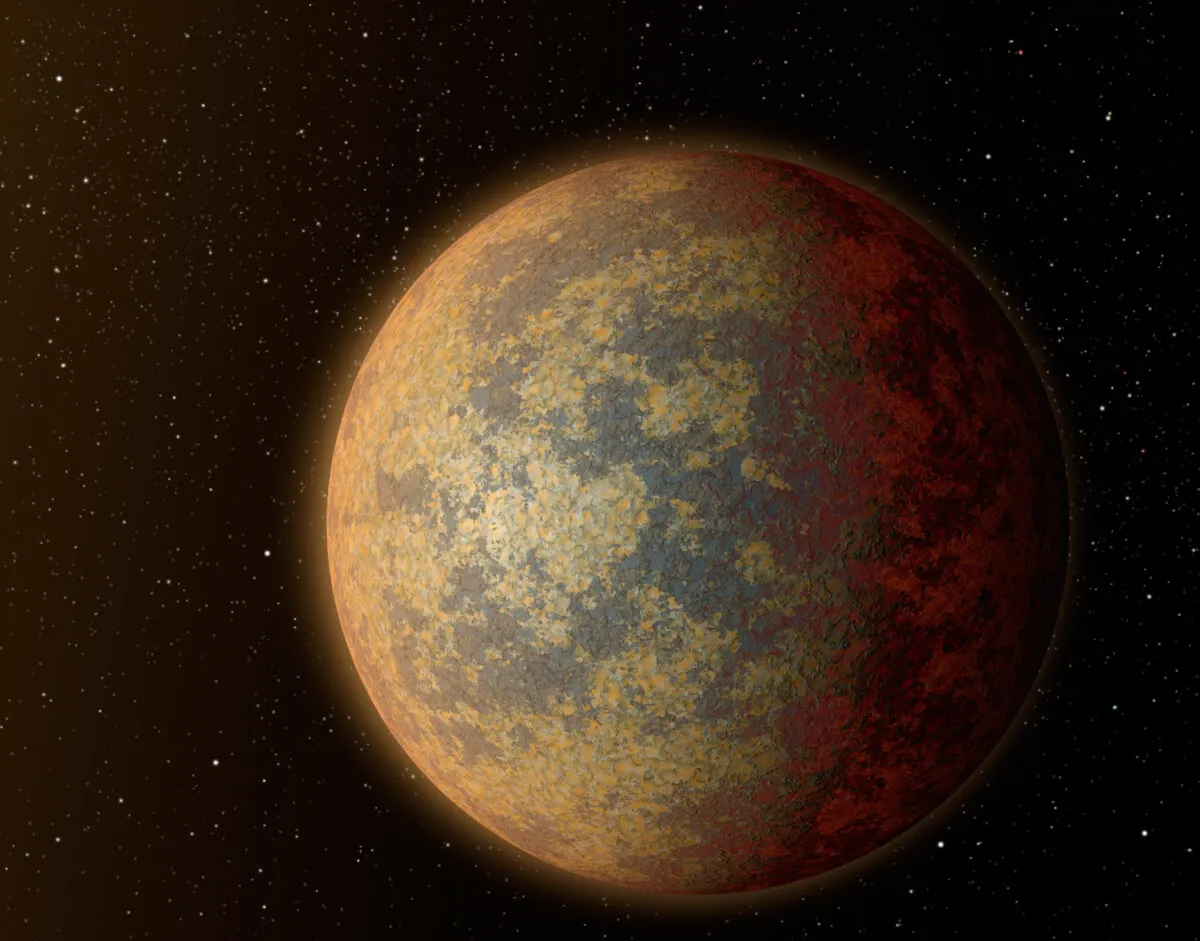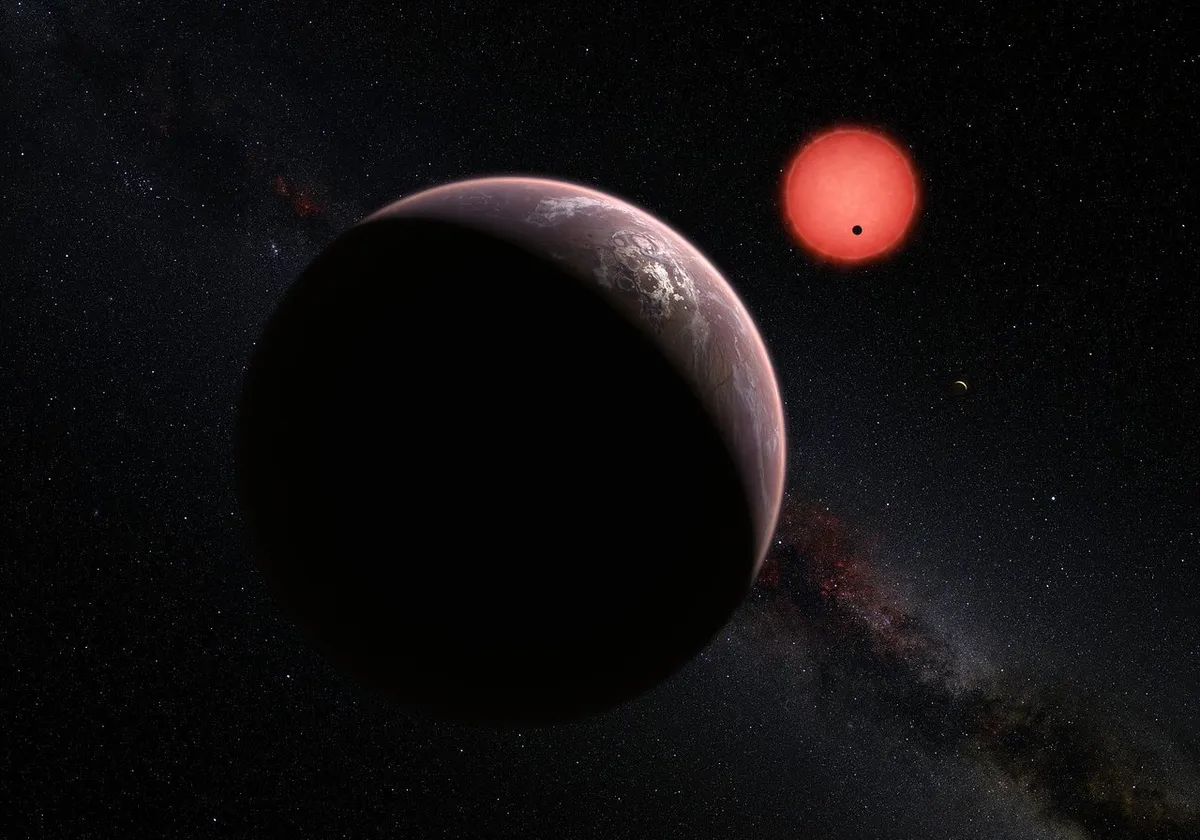One of the most important features of extrasolar planets – planets beyond our Solar System – is whether they have an atmosphere or not.
For astrobiology in particular, small, rocky planets blanketed with an atmosphere offer the best hope in the search for life beyond Earth.
The two key factors affecting whether a planet can retain an atmosphere over billions of years are:
- Its escape velocity, which affects how well its gravity is able to hold on to a gas envelope
- The cumulative amount of sunlight it has received from its star (instellation)
High instellation, particularly of extreme X-rays, acts to strip away gas molecules.

Determining the cosmic shoreline
In an influential 2017 paper, Kevin Zahnle and David Catling plotted known exoplanets, as well as the planets and moons in our Solar System, on axes of escape velocity versus instellation.
They fitted a line on the graph to separate those worlds known to have an atmosphere from airless bodies, which they called the ‘cosmic shoreline’.
Worlds lying above this shoreline (that is, those with a low escape velocity relative to the strength of their sunlight) have been stripped of any existing atmosphere.
This is useful, because it allows astronomers to predict which smaller exoplanets that have not yet been well characterised are expected to have an atmosphere or not.

Other studies since 2017 have attempted to refine this cosmic shoreline, running computer models of atmospheric escape processes.
Two astronomers from the Institute of Astrophysics of the Canary Islands (IAC) on Tenerife, Pedro Meni-Gallardo and Enric Pallé, have built on this.
The ‘classical’ cosmic shoreline calculated by Zahnle and Catling excludes exoplanets that have since been discovered to possess an atmosphere, and so the position of the demarcation line on the plot needs to be updated.
Meni-Gallardo and Pallé have also taken a slightly different tack to other studies.
Rather than relying on simulations, they’ve updated the concept using only observational data. That is, they’ve taken an empirical approach.

More worlds make the cut
They used results contained in the IAC ExoAtmospheres database – a repository of the nearly 300 exoplanets for which atmospheric gases have been detected – and combined this with information on these exoplanets from the NASA Exoplanet Archive.
The gradient of the cosmic shoreline on the plot is particularly important to establish accurately, as this has a significant impact on which small (and thus low escape velocity), potentially habitable exoplanets might have been able to retain their atmosphere.
And so for their Empirical Cosmic Shoreline (ECS), the researchers pinned the demarcation line to
pass through Mars and the super-Earth 55 Cancri e, which they argue are edge cases: planets right on the threshold of having just lost their atmosphere.

The gradient of their new ECS is steeper than previous studies, and so they conclude that a lot more of the low-mass planets orbiting M-class ‘red dwarf’ stars – which are some of the easiest for telescopes like JWST to analyse – have in fact retained their atmospheres.
Based on their analysis, Meni-Gallardo and Pallé say that the TRAPPIST-1 planets c–e are likely bare rocks.
But TOI-700 e and d, Earth-sized planets in the habitable zone of their star, are promising candidates that have been able to retain their atmospheres.
Lewis Dartnell was reading An Empirical Determination of the Cosmic Shoreline by Pedro Meni-Gallardo and Enric Pallé. Read it online at: arxiv.org/abs/2508.12865.
This article appeared in the November 2025 issue of BBC Sky at Night Magazine

